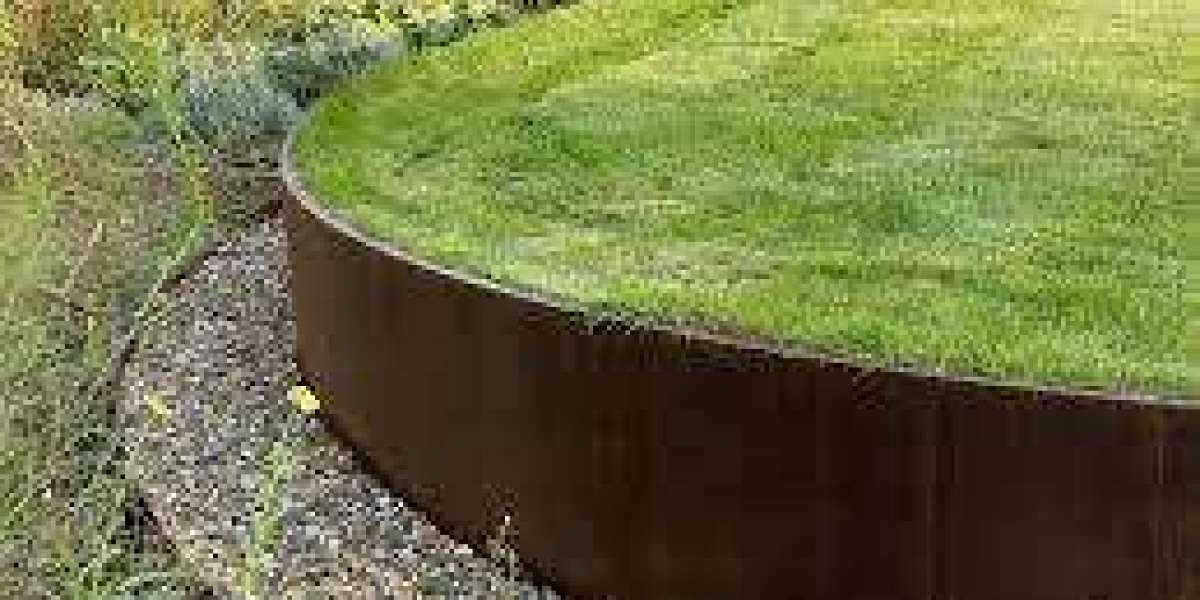Multi-tiered gardens have become a popular landscaping choice for both residential and commercial spaces, offering a visually appealing and functional way to manage sloped terrain. One of the most effective and stylish materials for creating retaining walls in these gardens is corten steel. Known for its durability and distinctive rustic appearance, corten steel adds both strength and aesthetic value to garden designs.
What is Corten Steel?
Corten steel, also known as weathering steel, is a group of steel alloys that develop a stable rust-like appearance after exposure to weather. Unlike traditional steel, which corrodes and deteriorates over time, corten steel forms a protective layer of oxide that shields the material from further corrosion. This makes it an ideal material for outdoor applications where longevity and low maintenance are crucial.
Advantages of Using Corten Steel in Retaining Walls
Durability and Strength:
Corten steel is extremely strong and resistant to weather conditions. It can withstand soil pressure, water exposure, and temperature fluctuations, making it perfect for retaining walls that must hold back earth in multi-tiered garden setups.
Low Maintenance:
Once the protective rust layer forms, corten steel requires little to no upkeep. There is no need for painting or sealing, which saves both time and costs over the long term.
Aesthetic Appeal:
The natural, warm reddish-brown patina of corten steel blends beautifully with outdoor landscapes. It adds a modern yet earthy feel to garden designs and contrasts well with greenery, flowers, and natural stone.
Environmental Friendliness:
Corten steel is recyclable and often produced with recycled materials, making it an eco-conscious choice for landscaping projects.
Versatility in Design:
Its malleability allows for custom shapes and sizes, which is perfect for creating retaining walls of varying heights and curves required in multi-tiered gardens.
Application in Multi-Tiered Gardens
Multi-tiered gardens rely heavily on well-constructed retaining walls to create distinct levels or terraces. These walls prevent soil erosion, manage water runoff, and provide flat planting surfaces. Corten steel excels in this role by offering a robust barrier that doesn’t compromise on style.
Garden designers often use corten steel sheets or panels secured corten steel retaining wall with posts or brackets to form the walls. The material’s slim profile means it takes up less space compared to traditional stone or concrete walls, maximizing the usable garden area. Additionally, corten steel can be combined with other materials like timber, stone, or gravel for a layered, textured look.
Considerations When Using Corten Steel
While corten steel has many benefits, it is important to consider a few factors:
Rust Runoff: During the initial weathering phase, rust can stain nearby surfaces or plants. Proper planning, such as installing drainage or protective coatings on adjacent materials, helps mitigate this.
Cost: Corten steel can be more expensive upfront than some alternatives, but its longevity and low maintenance often balance the investment over time.
Installation: Professional installation is recommended to ensure structural integrity, especially for taller retaining walls or complex garden layouts.
Conclusion
Using corten steel in multi-tiered gardens offers a perfect blend of durability, functionality, and aesthetic charm. Its ability to withstand harsh weather, coupled with a unique rustic appearance, makes it an excellent choice for retaining walls that support and elevate your garden’s design. For gardeners and landscapers aiming to create lasting, beautiful outdoor spaces, corten steel is a material worth considering.









